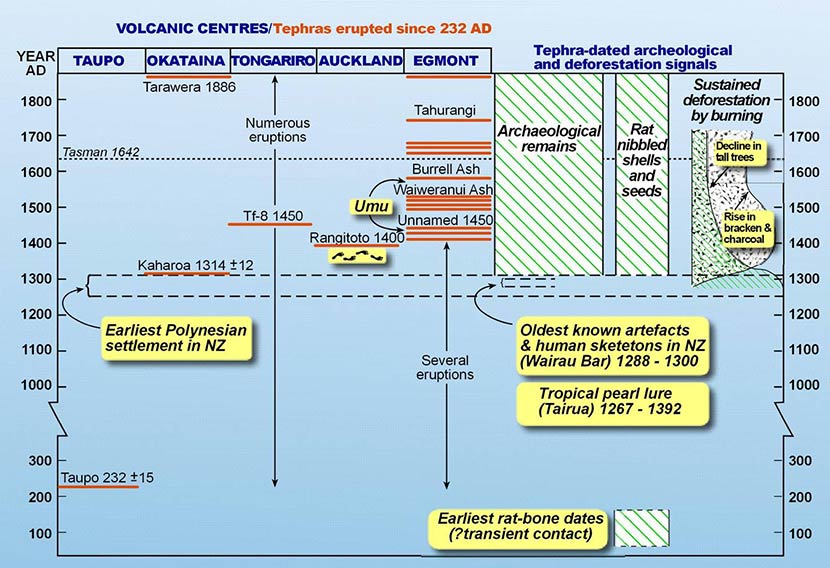
With its cluster of information dating from 1300 CE onwards, this chart illustrates the remarkable agreement among the different types of evidence for people first settling in New Zealand around that period. Ash-fall dates from volcanic eruptions are shown on the left. On the right are radiocarbon dates obtained from archaeological sites and from rat-nibbled shells and seeds. The far right shows changes in abundance of different types of pollen – indicating forest clearance. Some radiocarbon dates for the bones of the Pacific rat (kiore) stand out, as they give much earlier ages (at the bottom of the chart). Either these dates are for some reason earlier than the true age of the bones, or a canoe carried the rat to New Zealand around 50–150 CE – more than 1,000 years before the accepted date of settlement. If so, this was probably a transient contact by people from New Caledonia, Fiji or West Polynesia, and the canoe’s occupants did not settle.
Using this item
Private collection, David J. Lowe
Reference:
Lowe, D. J. and R. M. Newnham, ‘Role of tephra in dating Polynesian settlement and impact, New Zealand.’ PAGES (Past Global Changes) News 12, no. 3 (2004): 5–7.





Comments
Thank you for your comment.
Te Ara (not verified)
03 March 2014
I have always believed that
Suzanne Aldred (not verified)
03 March 2014
Add new comment